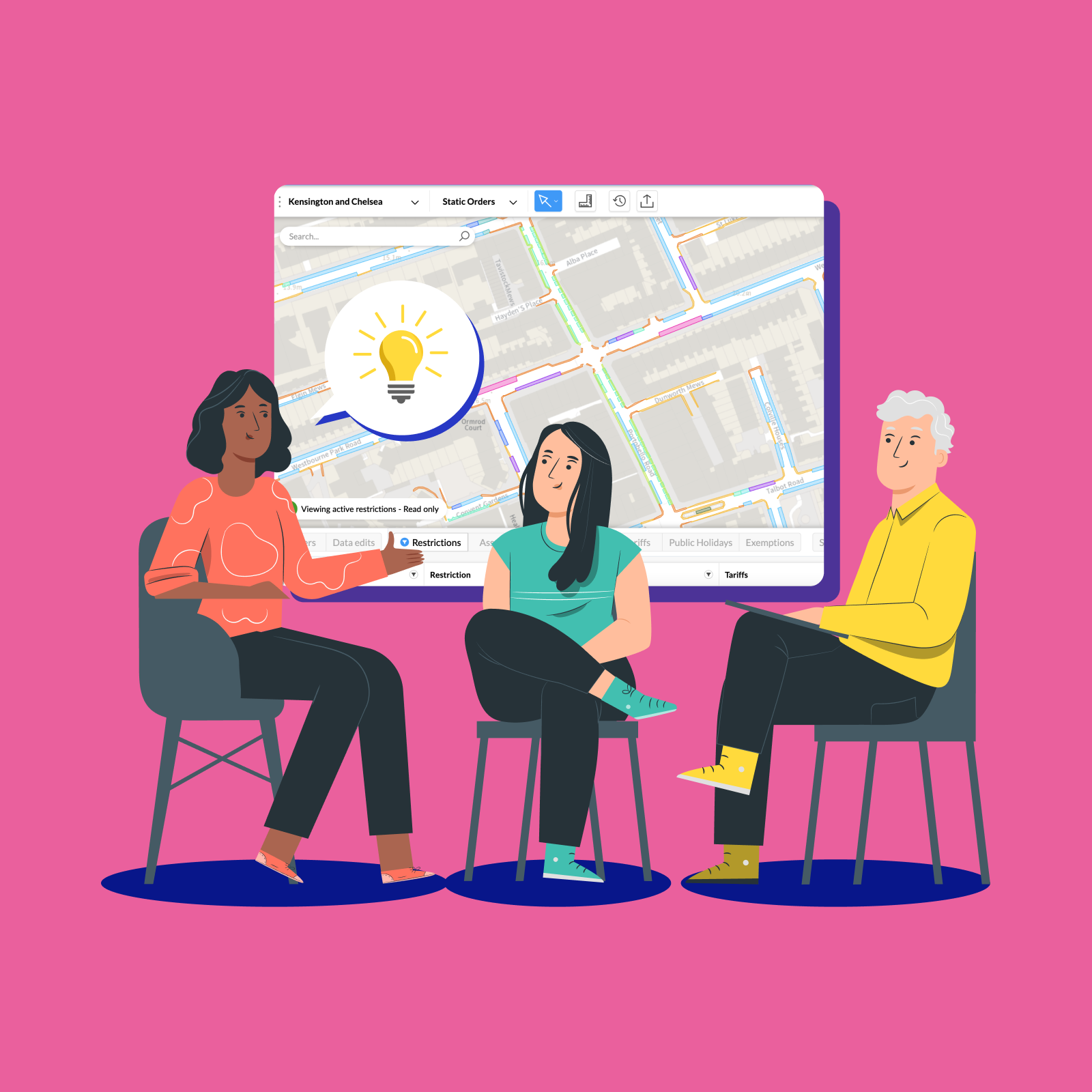Covid is presenting an opportunity to rewrite the rules for transport planning in our towns and cities. Now is the time to think about what sort of kerbs we want for our future, because we finally have the space and wiggle room to make bold changes. It is also a time where we must think creatively about how we are going to manage roadspace demand. Since public transport is not an option for most of the public (at least for the time being), how do we prevent our roads clogging up from vehicular traffic and what role does the kerb have to play?
As a lover of all things kerb, we have been brainstorming ways in which local authorities can use kerbside policies and interventions to support social distancing, manage roadspace demand, and support active travel over the coming months.
Here’s the low down:
Determine local priorities for the kerb – particularly in local economy hotspots
It is important Local Authorities (LAs) have a plan for their kerbside as part of a wider post-Covid strategy for their town centres. It’s worth reflecting upon these sorts of questions:
- Who are the various road users and what are their new requirements for the kerb? E.g. pedestrians may need more space on the high street for social distancing, whilst delivery vehicles might need more loading bays to support the rise in demand.
- What data will help LAs build a more granular understanding of their existing kerbside infrastructure and moving traffic orders, to help them make more informed decisions? E.g. Datasets from OpenStreetMap, parking datasets from AppyWay, and the DfT’s rapid cycle prioritisation tool can help to enhance local knowledge.
It’s useful for local authorities to think about their kerbside as precious real estate that can be recalibrated to support any covid-related paradigm shifts.
Encourage active travel by reallocating the kerb and making use of new government funding
Most LAs will be aware of the £250 million pot that the government is making available through the Emergency Active Travel Fund. It’s worth reiterating this well-known point: 55% of British journeys under 5 miles are made by car or van (source: UK Cycling Embassy). This is not to say that all of these trips need to be cycled, nor is everyone physically able to cycle and walk. But it does mean that if we improve active travel infrastructure and target these sorts of trips, we can win the most bang for our buck.
In light of Covid, the DfT is suggesting that quick wins for active travel include: widening footpaths; calming traffic; experimental segregated cycle lanes on busier, strategic routes; bicycle parking; modal filters and point closures; and decreasing motor traffic around schools. Each local authority will have their own cocktail of active travel interventions. The key here for local authorities is act fast and be bold.
Change Traffic Regulation Orders (TROs) to prioritise certain types of vehicle users
The pandemic is forcing LAs to ask existential questions about vehicular traffic within their town centres. At AppyWay we have noticed that our LA partners are pondering over questions such as: What is the value of our kerbs beyond parking revenue? Which type of vehicle users need kerbside access the most right now and where? The answers to these questions about cars are of course unique to every geography, but we are finding some common themes:
- Deliveries are on the rise (a trend which Covid has accelerated) – this is requiring more loading bays and new ways of thinking about deliveries. LAs can work with freight, delivery vehicles, utility companies, and kerbside intelligence companies to understand where the hotspots are. LAs can also experiment with other innovative ideas to manage the volume of these trips, like parking bays as ‘mini distribution hubs’ where electric bike fleets can deliver the parcels throughout the neighbourhood (more about this in John Dale’s article Paving the way for Flexible Kerbs in the LTT).
- Blue Badge users will always need to be catered for and they must not be forgotten during the redesign of streets. Frontline working staff also need priority spaces.
- Preserving taxi banks is a requirement for many local authorities – but perhaps these can be opened up for a wider array of services, such as demand responsive transport and ride sharing.
These are only a few ideas – but TROs are a powerful tool that LAs can use to prioritise certain types of drivers, which can in turn help to manage road traffic in designated areas.
-
Revisit Parking Charges
Since riding public transport is a no-go for the time being – there will be an inclination to drive for both leisure and work trips. This is perhaps one of the biggest challenges local authorities are facing, and there is no single right answer on how to address this.
That being said, LAs could consider extending parking charges (a kerbside trick!) as a demand management tool. Calderdale Metropolitan Borough Council, for instance, is currently consulting on extending their charges from 18:00 until 20:00 and introducing new charges on Sundays and Bank Holidays in Halifax town centre.
Extending charges is a key way to shape demand on the road network and will help LAs make up for the parking revenue most LAs have lost during lock down. Extending charges is politically difficult to achieve, but now is certainly the best time to try.
-
Experiment (experimental orders)
Local Authorities should (and from what we can tell – already are!) make greater use of Experimental Orders (EOs) during this time. EOs are trials on the road that require less upfront consultation, but require more thorough monitoring and consultation after the scheme has been implemented. This may seem onerous, but it means LAs can get schemes quickly on the ground, gather data about the effects, and gauge public opinion. EO’s can be quickly implemented and public opinion easily collected via AppyWay’s traffic order management tool Mapper.
-
Extend hours of bus lanes
The London Borough of Hounslow has extended bus lane hours to 24/7 (where possible), which they have implemented on a trial (EO) basis. Ironically, Hounslow is not doing this to encourage public transport, but rather to make more space for cycling on main roads as a ‘quick fix’, since cyclists often use bus lanes where there are no cycle paths.
We’ve mentioned only the tip of the iceberg when it comes to post-Covid kerbside interventions. Whether you are a local authority or a private sector player in the mobility space, we’d love to hear from you about which kerbside and transport planning interventions you are experimenting with. If you’re looking more information about what funding and initiatives are available, we recommend heading to our Reimagining Travel and Public Space Guide. Our essential guide breaks down what the new Statutory Guidance really means and how local authorities can best respond to secure funding and transform their networks.





